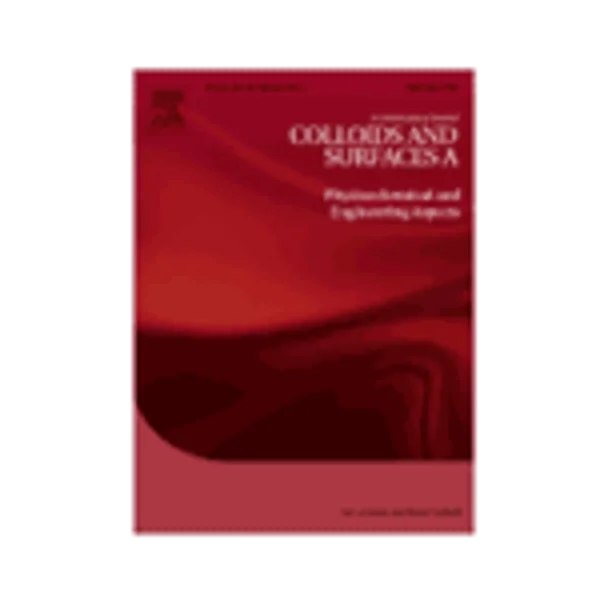-
individual and mixed adsorption of alkylcarboxylbetaines and fatty amide ethoxylates at daqing sandstone/water interface
جزئیات بیشتر مقاله- تاریخ ارائه: 1392/07/24
- تاریخ انتشار در تی پی بین: 1392/07/24
- تعداد بازدید: 1142
- تعداد پرسش و پاسخ ها: 0
- شماره تماس دبیرخانه رویداد: -
the individual adsorption of a series of alkylcarboxylbetaines, including single long-alkyl dimethylcarboxylbetaine (c12b, c14b, c16b, and c18b) and didodecylmethyl-carboxylbetaine (dic12b), as well as fatty amide ethoxylates (c12mea-eo1 and cmea-eo2), at negatively charged daqing sandstone/water interface at 45 °c were studied and compared with that of typical anionic and cationic surfactants. the results show that the saturated adsorption of surfactants at solid/water interface can be well characterized by a layer number, n, defined as the ratio of the saturated adsorption at solid/water interface to that at air/water interface, and in general the saturated adsorption of different species follows an order of anionic (n < 0.5) < nonionic (0.5 < n < 1) < zwitterionic (n > 1) < cationic surfactants (n > 2). the adsorption of the alkylcarboxylbetaines is initially driven by the electrostatic interaction between the positive charges in surfactant molecules and negative charges on surface followed by the chain–chain interaction which inducing admicelle formation on the solid surface. the single long-alkyl carboxylbetaines have similar saturated adsorption, i.e. with n between 1.49 and 1.71, but the double long-alkyl carboxylbetaine, dic12b, gives a relatively lower n value (1.07) although it has a comparative saturated adsorption at solid/water interface due to its high adsorption at air/water interface. lacking of the electrostatic interaction, the saturated adsorption of the fatty amide ethoxylates is in general low, as indicated by their low n values (0.595 and 0.526). for mixed adsorption systems nearly ideal mixing and middle synergism are observed for dic12b/c12b (homologous mixture), and dic12b/c12mea-eo1/(zwitterionic/nonionic) mixtures, but strong synergisms are observed for sds/c12b and sds/c16b (anionic/zwitterionic) mixtures. thus for surfactant–polymer flooding the achievement of low adsorption retention depends strongly on the species selected if mixed surfactants are necessary.
مقالات جدیدترین رویدادها
-
استفاده از تحلیل اهمیت-عملکرد در ارائه الگوی مدیریت خلاقیت سازمانی و ارائه راهکار جهت بهبود
-
بررسی تاثیر ارزش وجوه نقد مازاد بر ساختار سرمایه شرکت های پذیرفته شده در بورس اوراق بهادار تهران
-
بررسی تأثیر سطح افشای ریسک بر قرارداد بدهی شرکت های پذیرفته شده در بورس اوراق بهادار تهران
-
بررسی تأثیر رتبه بندی اعتباری مبتنی بر مدل امتیاز بازار نوظهور بر نقد شوندگی سهام با تأکید بر خصوصی سازی شرکت ها
-
تأثیر آمیخته بازاریابی پوشاک ایرانی بر تصویر ذهنی مشتری پوشاک ایرانی (هاکوپیان)
-
بررسی اثر پارامترهای سطوح مشترک بر رفتار دیوارهای حایل سنگ چین با استفاده از روش اجزا منفصل
-
اثرات کوتاه و طولانی مدت عصاره پرسیاوشان روی هموگلوبین، هماتوکریت، حجم گلبول های قرمز، زمان پروترومبین و زمان ترومبوپلاستین
-
بررسی جهش هاى نادر ژن بتاگلوبین در شمال غرب کشور
-
simulation of polycrystal deformation with grain and grain boundary effects
-
determination of mechanical properties of soft tissue scaffolds by atomic force microscopy nanoindentation
مقالات جدیدترین ژورنال ها
-
مدیریت و بررسی افسردگی دانش آموزان دختر مقطع متوسطه دوم در دروان کرونا در شهرستان دزفول
-
مدیریت و بررسی خرد سیاسی در اندیشه ی فردوسی در ادب ایران
-
واکاوی و مدیریت توصیفی قلمدان(جاکلیدی)ضریح در موزه آستان قدس رضوی
-
بررسی تاثیر خلاقیت، دانش و انگیزه کارکنان بر پیشنهادات نوآورانه کارکنان ( مورد مطالعه: هتل های 3 و 4 ستاره استان کرمان)
-
بررسی تاثیر کیفیت سیستم های اطلاعاتی بر تصمیم گیری موفق در شرکتهای تولیدی استان اصفهان (مورد مطالعه: مدیران شرکتهای تولیدی استان اصفهان)
-
نقش حسابداری مدیریت استراتژیک در عملکرد سازمانی (مطالعه موردی : هتل های 5 ستاره شهر تهران)
-
طراحی الگوی سقف شیشه ای با رویکرد نظریه داده بنیاد
-
بررسی عوامل موثر مدل سازی فرآیندهای کسب و کار(bpm) در قالب چارچوب itil جهت ارتقای هوش تجاری (bi) در سازمان تامین اجتماعی تهران
-
نقش ویژگی های کمیته حسابرسی بر رابطه بین انطباق مالیاتی و هموارسازی سود
-
بررسی ارتباط بین ضعف کنترل های داخلی و همزمانی قیمت سهام در شرکت های پذیرفته شده در بورس اوراق بهادار تهران: تبیین نقش تعدیلگر ویژگی های هیئت مدیره




سوال خود را در مورد این مقاله مطرح نمایید :